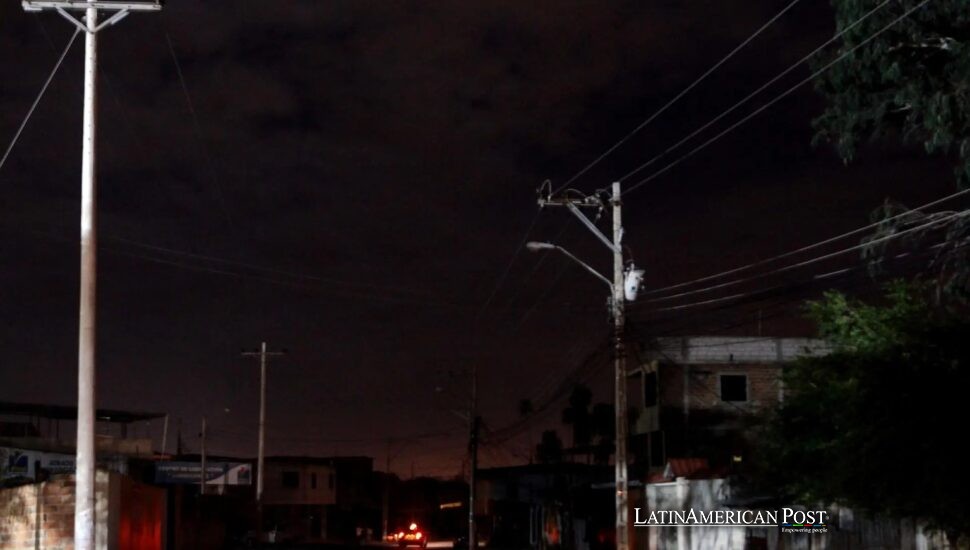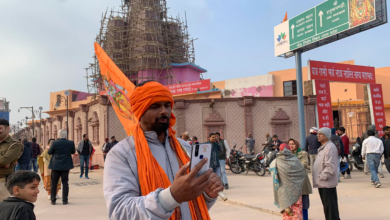Latin America's Hidden Electricity Crisis Exposes Stark Inequality

Amid headline-making claims of near-universal power coverage, millions in Latin America remain uncounted by official measures and suffer inadequate service. This article examines how conventional electricity access indicators fail to reflect harsh realities for regional communities.
Understanding The Root Of Electricity Access
The contrast between urban and rural life remains clear in Latin America, a region with some of the highest inequality levels in all nations. Resources or wealth stay concentrated in cities along with major infrastructure. Rural communities often lack essential services or development. However, international organizations praise America’s high electricity access rates, with numbers above 95 or 98 percent of the population. Yet critics argue these rosy figures gloss over what happens in isolated corners, where the flicker of a single low-watt bulb or intermittent current might technically register as “access” but offers negligible quality-of-life improvements.
Government ministries and agencies in many Latin American nations rely on a primary indicator for electricity access. Typically, this metric adopts a binary approach: you either have power or you do not. Once a household is declared connected, the data lumps that family with all the rest who presumably enjoy a stable power supply. However, such a broad categorization omits crucial nuances. If a single overhead line extends to a dwelling, but the current is too unstable to power a reliable refrigerator, can we honestly claim that the family has service? If frequent outages render a community dependent on candles half the week, is it fair to mark them as fully electrified?
Researchers raise the alarm that these simplistic measures undermine genuine progress. They highlight a near-invisible demographic—people who technically count as electrified but endure substandard, sometimes barely usable electricity. These populations remain overshadowed because official reports seldom measure how consistently or powerfully electricity flows. In the eyes of policymakers, the region appears to have nearly achieved universal service, thereby deprioritizing funds or initiatives for robust improvements. Skeptics assert that unless new definitions incorporate reliability and adequacy, entire districts remain stuck in what can be called an “electricity access trap.”
In academic circles, experts seek better ways to collect data. They suggest a more complete set of measurements, which includes voltage stability, daily hours of service, and the use of essential appliances or household costs. Others highlight that the energy transition—centered on solar, wind, or other renewable sources—should expand the raw number of connections and address whether rural inhabitants can sustain livelihood improvements. That means assessing whether the installed system covers key needs: lighting, refrigeration, communication, and, in modern contexts, perhaps even moderate industrial uses for local businesses.
The Imperfect Binary Indicator And Its Consequences
Policy experts often treat the electricity indicator as a quick, universal measure. But it fundamentally rests on a binary logic: a household is classified as “served” if it nominally obtains power from any source. That logic simplifies budgets, letting governments tout high coverage percentages, a statistic that wins global accolades or meets certain development goals. Yet communities can remain stuck with low-quality service and are prone to recurrent outages or insufficient wattage.
In the push to claim success, this indicator fosters complacency. Central authorities see 98 or 99 percent coverage, assume the job is done, and allocate fewer resources to remote areas. Meanwhile, families nominally with “access” might have flickering light bulbs, no actual capacity for refrigeration, and no consistent route to power heavier machinery. That can stall efforts to preserve food, operate health clinics, or maintain communications. Children’s education suffers if the lighting is too weak for nighttime reading. Small-scale entrepreneurs—perhaps fishers, weavers, or farmers—cannot scale their businesses if stable electricity is unavailable.
This binary framework also obscures the question of cost. Private providers or local cooperatives offer connections in many places but at steep rates. Households must limit usage or pay a disproportionate share of their income for unreliable supply. Under the standard measure, though, these families still count as electrified. But in real terms, how beneficial is a supply they can scarcely afford?
Critics underscore that in an era of energy transition, continuing to rely on this outdated yardstick yields lopsided progress. Renewables can indeed reach further flung villages, but if nobody measures whether the system consistently meets local demands, the impetus for stable expansions diminishes. When entire pockets of the country remain mischaracterized as “fully electrified,” little impetus remains to strengthen distribution lines or invest in advanced microgrids. Government leaders might pat themselves on the back for near-universal coverage, ignoring the daily challenges of substandard setups.
Counting The Invisible Households
One of the thorniest issues in bridging the gap between official data and lived reality is the difficulty of measuring the population that endures meager electricity service. Government statisticians typically record whether a household is “connected.” Once a line is in place, the classification never reverts, even if the supply is minimal. In remote zones, some families rely on small solar panels or outdated diesel generators that hamper device usage or refrigeration. Others find that lines installed decades ago no longer suffice for modern power demands.
Moreover, these families rarely appear in formal energy surveys, overshadowed by macro-level analyses or data that lumps them with fully connected customers. The mismatch fosters illusions: national coverage looks near complete, leaving no impetus to extend or upgrade. Meanwhile, local authorities might even be reluctant to report subpar service, worried that disclosing it could hamper budget allocations or reflect poorly on specific leadership.
An associated challenge is collecting accurate data in scattered settlements. Survey teams face logistical struggles—rugged roads, unpredictable weather, and constraints on time or funding hamper visits. Enumerators often skip smaller enclaves or rely on local functionaries with limited insight. Underreporting is inevitable. Out of frustration or mistrust, some families might not fully express how poor their service is. Others might fear disclosing the daily blackouts, suspecting no real remedy will follow. All these factors hamper a thorough portrayal, effectively erasing the “invisible” from official counts.
NGOs and academic researchers occasionally attempt to conduct more profound on-the-ground studies. They measure how often households can run lights at night, store perishables, or operate tools. These micro-level investigations usually show a vast chasm between “technically connected” and “functionally powered.” Yet these findings rarely feed into official government databases, anchored to the more straightforward yes/no approach. The consequence is that the lines of accountability break down, leaving local communities in indefinite limbo.
Paving The Way For A Just Energy Future
To fix these blind spots across the power system, experts suggest a complete change in how the region measures electricity access. A single perfect solution does not exist, but several methods focus on a “multi-tier” system. Rather than mark a house as connected or not, each home receives a tier level based on how steady the power flows, the total watts available, or the hours with enough voltage each day. Countries like India have experimented with multi-tier classification to assess how rural villages use power. Can Latin American countries adopt these methods?
A key first step requires a reliable path for data collection. This includes state inspections or expert teams who visit distant areas. Night light data from satellites supports the detection of power consumption patterns to show which villages stay dark for long periods. Another angle is crowdsourcing: equipping residents with simple metering or mobile apps to log outages or record daily hours of power. Such granular data might be costlier initially but would yield better target interventions.
Simultaneously, policymakers can better integrate local voices. Instead of top-down pronouncements that a region is fully electrified, governments could partner with municipal or community leaders to verify actual conditions. A shared platform—where official data can be crosschecked against grassroots surveys—would expedite corrections to inflated coverage rates. After all, local participants are most at stake if inaccurate coverage claims disqualify them from future upgrades.
In the long term, a more just energy agenda involves acknowledging that “sufficient, stable electricity” is as fundamental as a grid connection. Suppose microgrids or solar kits represent the best near-term solution for distant sites. In that case, authorities must ensure they provide enough load capacity for essential uses, from boiling water to powering internet connections. A good indicator is to track the number of households with enough power for refrigerators to store medicine or run fans at night. This measurement lets the region focus on fixing service gaps rather than pursuing unrealistic coverage goals.
The urgency increases as climate problems grow more extensive. The region’s carbon goals face obstacles when communities without reliable power must use polluting generators as backup. Instead, well-designed expansions—incorporating solar or small hydropower, for instance—may drastically improve lifestyles while aligning with climate goals. However, political will is required to reexamine the outdated electrification metric and the illusions it fosters.
To realize these aims, governments must set aside complacency about near-universal coverage. They must confront the reality that millions remain under-electrified. Adopting a multi-tier system, or some parallel approach, ensures that official data spotlights precisely where the worst deficits lie. That data then helps donors and states allocate resources more effectively. Meanwhile, technology—like advanced metering or usage sensors—could refine efforts, guaranteeing that newly installed capacity matches local consumption patterns.
Above all, a good energy justice system needs humility about claims of success in this region. Reports that praise “nearly full coverage” fail to show how families deal with constant power outages, unsafe electrical lines, or the limits on basic appliance use. The first step to fixing this gap starts with an honest look at these problems. Such an approach helps build real access to power instead of just numbers on paper.
Also Read: Colombia Deserves Leadership and Solutions, Not Petro’s Public Feuds
If Latin America can champion such an approach, it could become a global model for inclusive, accurate energy policy. Upgraded indicators might reveal the actual scale of underpowered homes, prompting targeted strategies with direct relief. Meanwhile, stronger collaboration among communities, NGOs, and state agencies can channel public funds or external grants into carefully monitored expansions. By rejecting complacent illusions and focusing on meaningful progress, Latin American nations might finally let these hidden millions see the real benefits of full electricity access.




